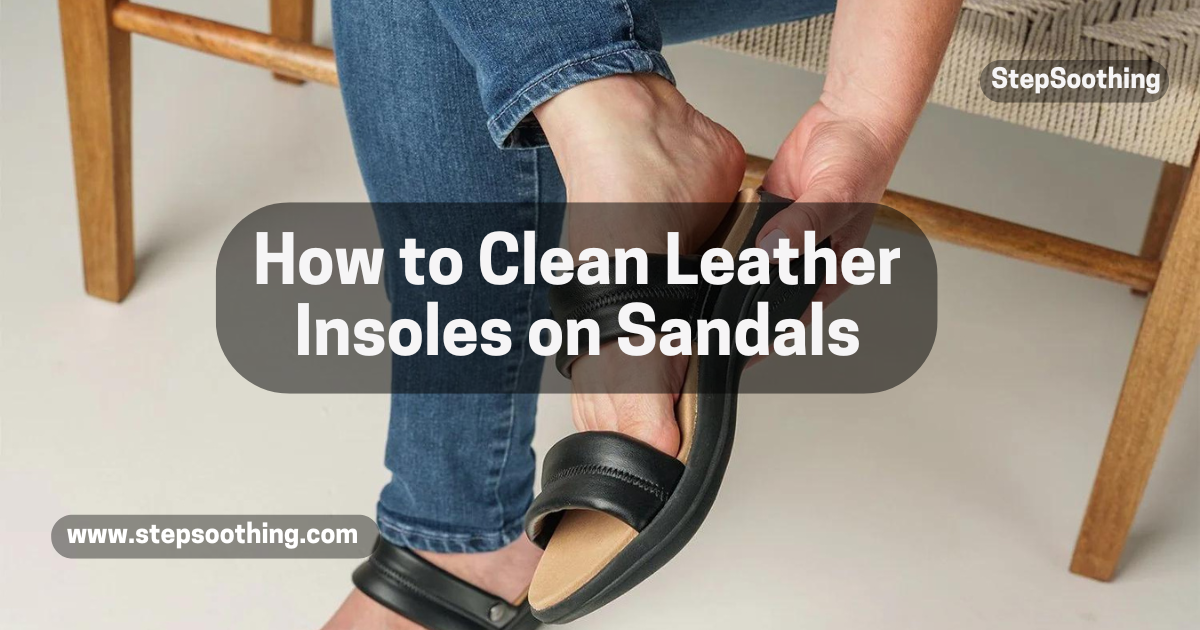Sandals are the ultimate warm-weather footwear. From casual beachwear to chic evening styles, sandals help you stay cool while looking fabulous. But like any footwear, sandals can start to show signs of wear over time, and if they aren’t properly cared for, they can lose their stylish appeal. If you’re looking to keep your favorite pair of sandals looking and smelling fresh, you’re in the right place! In this guide, we’ll break down simple, effective tips to maintain your sandals so they look as good as the day you bought them.
How to Clean Leather Insoles on Sandals
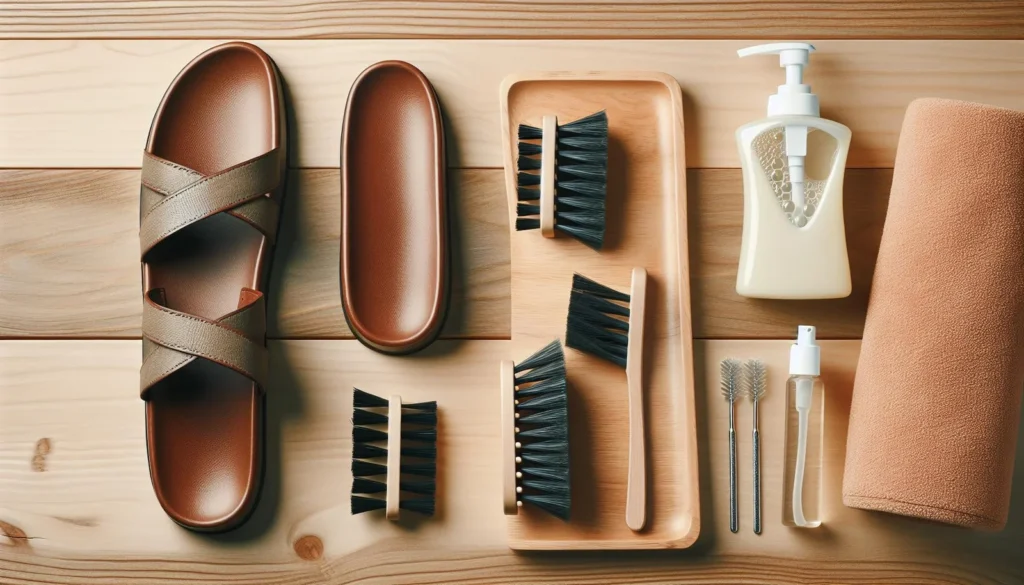
Why Keeping Sandals Fresh Matters
Sandals are typically exposed to more dirt, moisture, and wear than closed shoes. After all, they are meant to keep your feet open to the air, which means they’re also open to the elements. Whether it’s dust from a walk in the park, sweat from a hot summer day, or even just the oils from your skin, all these factors can accumulate quickly and make your sandals look tired.
Why It’s Important
If you’ve ever owned a beloved pair of sandals that looked fabulous on the first day but became dirty and worn over time, you know the frustration. When sandals are dirty, not only do they lose their stylish appearance, but they also feel less comfortable. The grime that builds up can lead to odors, and the wear can make the sandals start to fall apart. Plus, dirty sandals aren’t doing your feet any favors. Proper care helps keep your sandals looking fresh and ensures you can walk confidently wherever you go.
Long-Term Benefits
Taking the time to care for your sandals doesn’t just make them look better in the short term; it can extend the life of your sandals significantly. You’ll get more wears out of them, which means you won’t have to buy replacements as often. It’s not just about aesthetics—it’s also a great way to save money and be more sustainable.
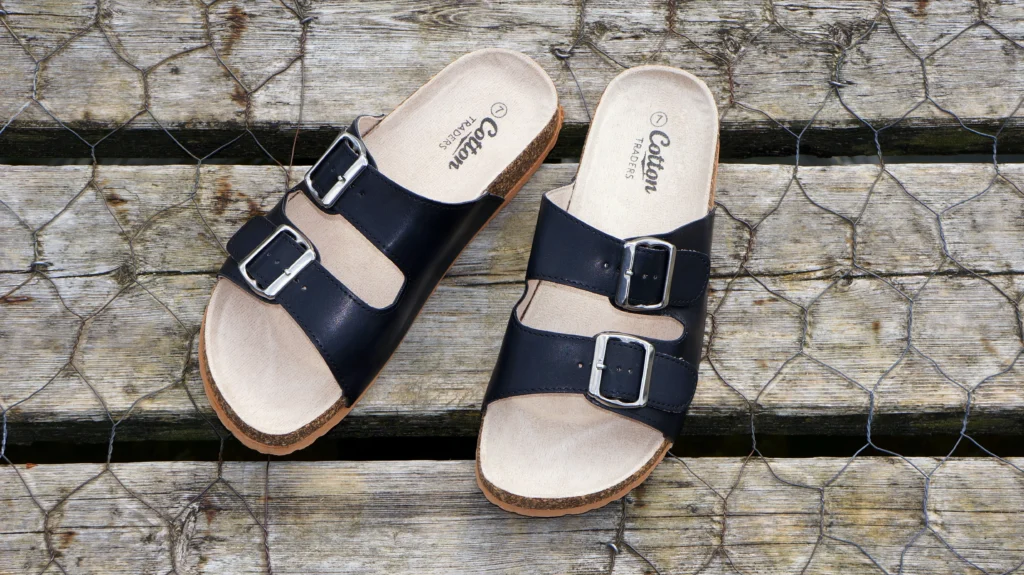
The Basics of Sandal Care: A Step-by-Step Cleaning Routine
Caring for your sandals doesn’t have to be complicated or time-consuming. In fact, with a few simple steps, you can keep them looking clean and new with minimal effort. Here’s a step-by-step guide that works for most sandal types, whether they’re leather, synthetic, or fabric.
Gather Your Tools
Before you start cleaning, make sure you have everything you need. The good news is that most cleaning supplies are things you likely already have at home:
- A soft, clean cloth (microfiber works great)
- A soft-bristled brush (an old toothbrush will do the trick)
- Mild soap or a sandal-friendly cleaner
- A small bowl of warm water
- Baking soda (optional)
- White vinegar (optional)
These are all basic materials that work for a wide variety of sandals.
Step 1: Wipe Down Regularly
The easiest way to prevent dirt buildup on your sandals is to get into the habit of wiping them down after each wear. This quick step can make a huge difference in how long your sandals stay fresh. After each outing, use a damp cloth to gently wipe away any surface dirt or grime, especially on the straps and footbed. This stops dirt from getting ground in and keeps your sandals looking new.
Step 2: Deep Clean the Straps
Different types of straps need different types of care. If your sandals are leather or synthetic, mix a little mild soap with warm water and dampen a cloth. Gently clean the straps, being careful not to soak them. Leather can be sensitive to too much water, so less is more. For fabric straps, you can use the soft-bristled brush to scrub any stubborn dirt. Always be gentle to avoid damaging the fabric, and rinse with a clean, damp cloth.
Step 3: Refresh the Soles
The soles of your sandals, especially the footbed, can be a hotspot for dirt, sweat, and odor. Use a damp cloth to clean the surface of leather footbeds, making sure to avoid soaking them. For synthetic or rubber soles, a little more elbow grease might be needed. Try using the soft-bristled brush with some mild soap and water to scrub away dirt. Make sure to rinse thoroughly and allow the soles to dry naturally. Avoid placing them in direct sunlight, as this can cause materials like leather to crack or fade.
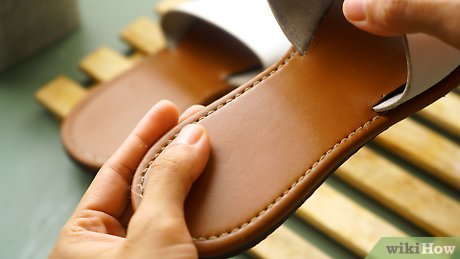
Combatting Odor: Simple Hacks to Keep Sandals Smelling Fresh
No one likes smelly sandals. Unfortunately, because sandals are often worn in hot weather, they’re more prone to developing odors than closed shoes. Here are some easy hacks to keep your sandals smelling fresh, so you can avoid that embarrassing moment when you slip them off.
DIY Deodorizing Solutions
You don’t need fancy products to eliminate odors from your sandals. One of the most effective solutions is sitting right in your pantry—baking soda! Sprinkle a generous amount of baking soda on the footbed of your sandals and leave it overnight. In the morning, just shake off the powder, and the odors should be noticeably reduced. Another simple solution is white vinegar. Mix equal parts vinegar and water in a spray bottle and lightly mist the footbed. Vinegar helps kill odor-causing bacteria while being gentle on most materials.
Using Shoe Sprays
If you prefer store-bought solutions, shoe deodorizing sprays are another great option. Look for sprays that are specifically designed for shoes and sandals. These sprays often contain antibacterial agents that help eliminate the source of the odor, rather than just masking it. Make sure the spray you choose is safe for your sandal material, whether it’s leather, fabric, or synthetic.
Quick Drying Tips
One of the main reasons sandals start to smell is because they retain moisture. Whether it’s sweat or water from the environment, wet sandals can become a breeding ground for bacteria. Make sure your sandals dry out completely after each wear. If they get wet, stuff them with paper towels to absorb the moisture and help them dry faster. Avoid leaving them in direct sunlight, which can damage the material.
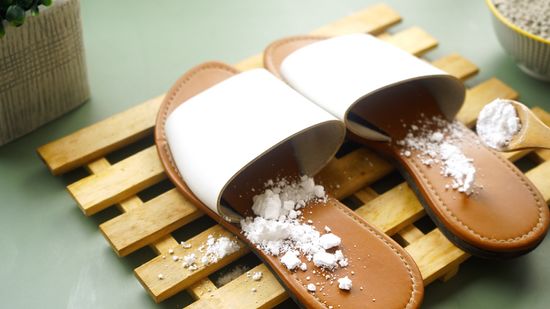
Protecting Your Sandals from Damage
While cleaning is essential, it’s also important to take steps to protect your sandals from damage. A little preventive care goes a long way in keeping your sandals looking as good as new.
Preventing Wear and Tear
Sandals, especially leather ones, are prone to scuff marks, scratches, and stretched-out straps over time. To protect them from everyday wear, consider using a leather or fabric protector spray. These sprays create an invisible barrier on your sandals, helping to repel dirt, water, and oils. Be sure to test the product on a small, hidden area first to ensure it won’t cause discoloration.
Avoiding Water Damage
Not all sandals are designed to get wet. Leather, in particular, can be damaged by water. To prevent water stains or damage, apply a waterproofing spray to your sandals before wearing them in wet conditions. If you accidentally get them wet, be sure to dry them off immediately. Use paper towels to help absorb the moisture and let them air dry in a cool, shaded area.
Proper Storage
Proper storage is key to keeping your sandals in shape during the off-season. Avoid throwing them into a pile or cramming them into a small space where they could bend or warp. Instead, store them in a cool, dry area where they can breathe. Using a shoe rack, cubby, or even the original box can help keep them organized and free from dust. If you want to go the extra mile, store them in a cloth dust bag to protect them from dirt and sunlight.
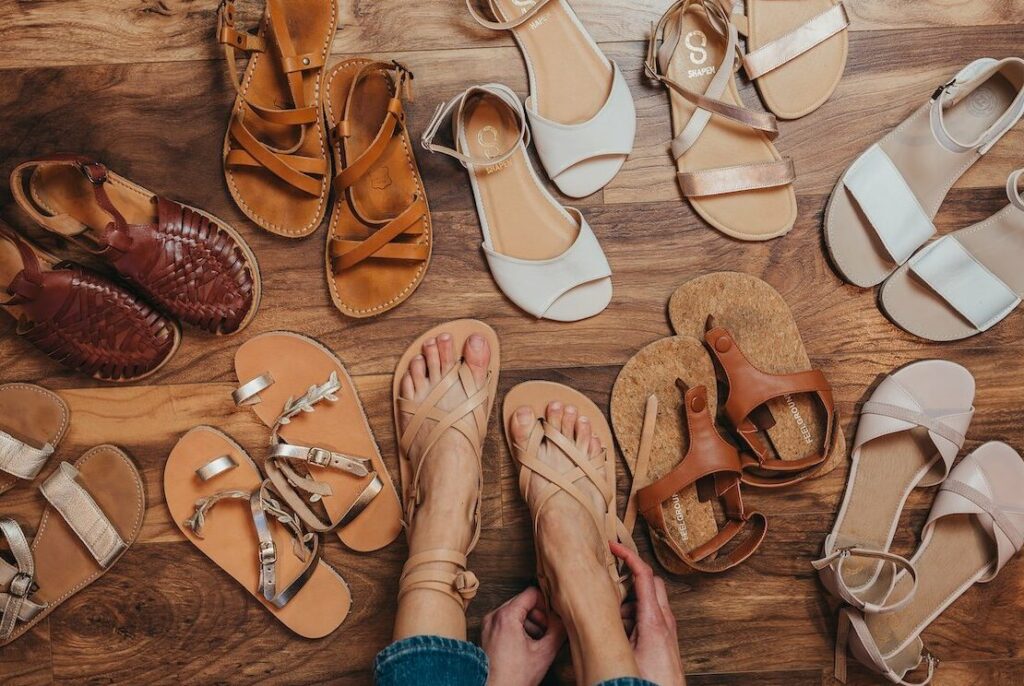
How to Restore Worn-Out Sandals to Look Like New
Even with the best care, sandals can still show signs of wear over time. But don’t worry! There are ways to restore your sandals and give them a new lease on life.
Fixing Scratches or Scuffs
If your leather sandals have scratches or scuff marks, you can often fix them at home with a leather conditioner or polish. Apply a small amount of conditioner to a soft cloth and gently buff out the scratches. For deeper scuffs, a shoe polish that matches the color of your sandals can work wonders.
Refreshing Faded Colors
Fabric and synthetic sandals can sometimes lose their vibrant colors after prolonged exposure to sunlight. To refresh faded colors, you can use fabric dye for cloth sandals or a special paint for synthetic materials. Always follow the product instructions carefully and test on a small area first to avoid any mishaps.
When to Get Professional Help
If your sandals are in rough shape, it might be time to consult a professional. A cobbler can repair broken straps, replace worn soles, and even restore leather that has been severely damaged. While this may seem like an investment, it’s often cheaper than buying a new pair, especially if your sandals were expensive to begin with.
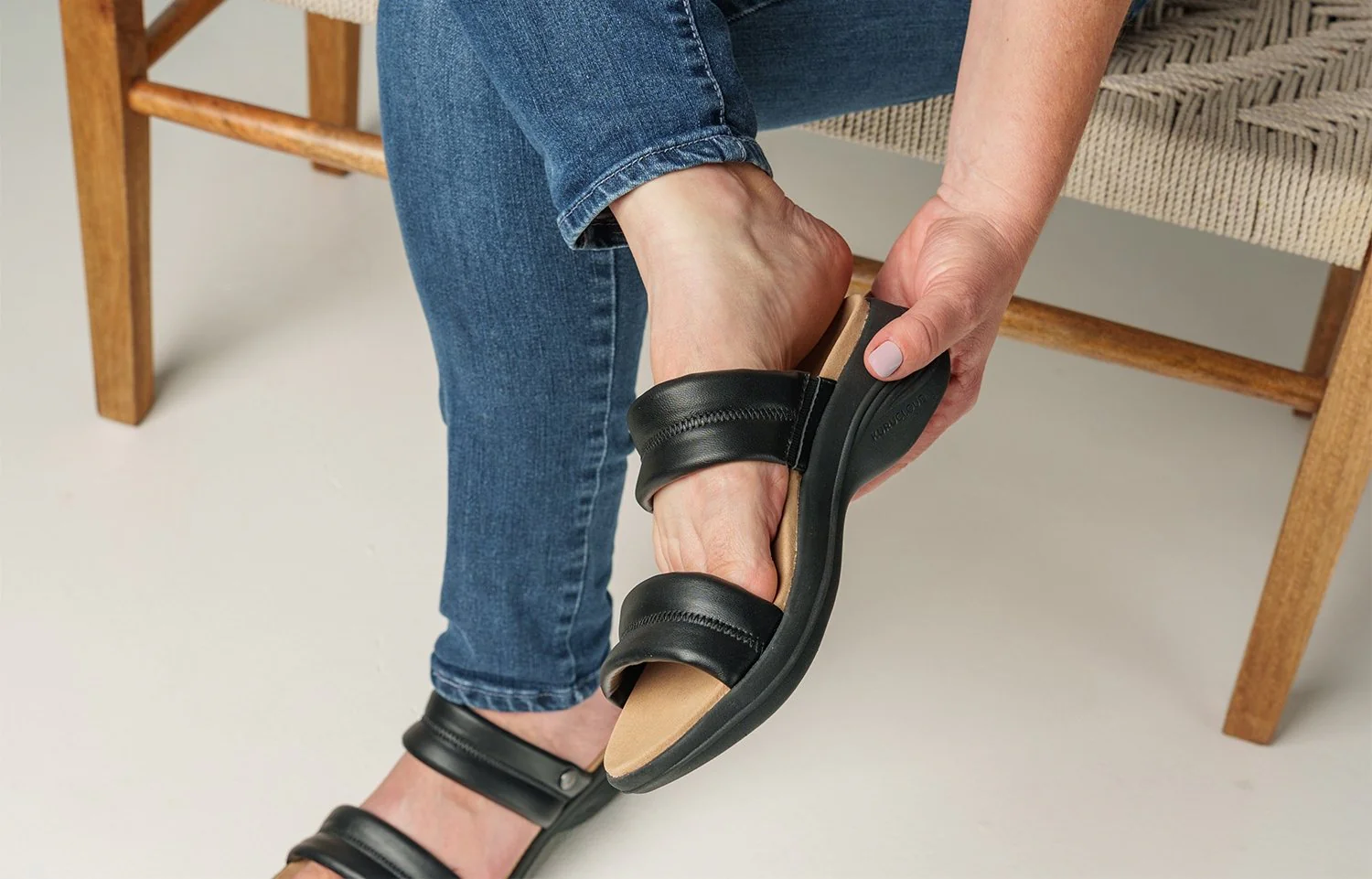
Best Practices for Everyday Maintenance
To keep your sandals looking brand new, it’s important to incorporate good habits into your routine. A little regular maintenance can go a long way in extending the life of your favorite pair.
Rotate Your Sandals
Wearing the same pair of sandals day after day can lead to quicker wear and tear. If you have multiple pairs, try rotating them throughout the week. This gives each pair time to air out and reduces the overall wear on any one pair.
Quick Post-Wear Routine
After wearing your sandals for the day, take a minute to wipe them down with a damp cloth and set them in a cool, dry place to air out. This simple step prevents dirt and sweat from building up and keeps your sandals smelling fresh.
Regular Deep Cleaning Schedule
It’s a good idea to give your sandals a deep clean at least once a month during the summer season. This will help remove any dirt or odors that have accumulated and keep your sandals looking their best.
Conclusion
Your stylish sandals deserve to stay fresh and look their best, and with the proper care, they absolutely can! From learning how to clean leather shoe insoles to protecting your sandals from wear and tear, maintaining your footwear is easier than you think. Start by following these simple steps to keep your favorite sandals looking brand new, even after multiple wears.
Whether you’re lounging by the pool, strolling through the city, or hitting the beach, ensuring you have fresh sandals helps you step out in style and confidence. If your sandals have non-removable insoles, you can easily clean them with the right techniques. Additionally, if you’re wondering can Brooks insoles be washed or how to remove glued insoles properly, we’ll guide you through the best practices to keep your sandals in top shape all season long.
Frequently Asked Questions
What if my insoles are stained?
For light staining, try rubbing the area with lemon juice or vinegar using a soft cloth. For deeper set stains that don’t respond to cleaning, you may need to consider replacing the insoles.
Can I put insoles in the washing machine?
It’s best to clean leather by hand only. Machine washing can strip the oils from the leather leading it to dry out and crack over time.
How often should I clean my insoles?
Aim to clean your leather insoles every 2-4 weeks during peak wear periods. Check them after heavy use or exercise when feet tend to sweat more.
What’s the best way to dry insoles after cleaning?
Always allow leather to air dry naturally rather than using heat from a hair dryer or direct sunlight. Keep them away from direct heat sources as they dry.
How can I extend the life of my leather insoles?
Using shoe trees, rotating pairs, consistent cleaning every few weeks, and conditioning the leather are the best ways to make leather insoles last. Replace them once they become excessively worn.
